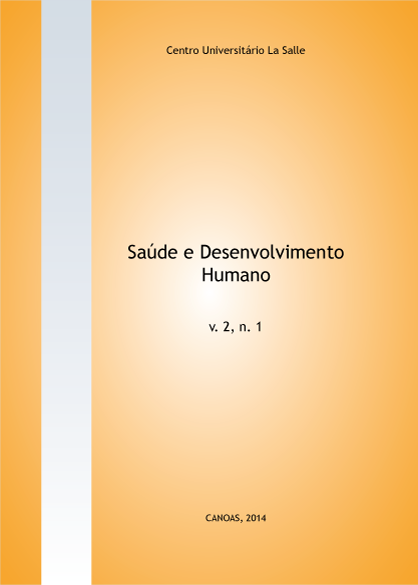Attention and language in children with cleft lip and palate
DOI:
https://doi.org/10.18316/1314Keywords:
Attention, Language, Cleft Palate, Cleft lipAbstract
Objective: to characterize cognitive performance to use attention and language of children with cleft lip and palate transforamen.
Method: We evaluated 22 subjects, both sexes, 08 to11 years old, with the cleft lip and palate incisor transforamen, unilateral and bilateral, repaired by the following instruments: TAVIS-3, TVIP and ENP.
Results: When evaluated selective and with attention levels of alternation, bigger losses in errors per action were found out. In the field of receptive vocabulary, 82 of the sample had average results and higher than expected. When analyzed the averages regarding to the neuropsychological performances, it was found that the motor functions of the hands, upper and cutaneous sensations and kinesthetic of receptive language and arithmetic skills were tasks of largest group domain. The results were most impaired in tests of attention and cognitive functions of language, being the most impaired related to the support of visual attention, to the cognitive-linguistic semantic functions and the pragmatic of communication, auditory working memory and the acoustic domain-propelled in rhythmic structure.
Conclusions: The cognitive skills of attention and of language profiles showed profiles below the expected for the age group, indicating limited resources interfering in the performance of important learning skills.
References
Golsberry G, O'leary D, Hichwa R, Nopoulos P. Functional abnormalities in the neural circuitry of reading in men with nonsyndromic clefts of the lip or palate. Cleft palate craniofac J. 2006;43(6):683-90.
Lemos ICC, Feniman MR. Teste de Habilidade de Atenção Auditiva Sustentada (THAAS) em crianças de sete anos com fissura labiopalatina. Braz J Otorhinolaryngol. 2010;76(2):199-205.
Gomes H, Molholm S, Christodoulou C, Ritter W, Cowan N. The development of auditory attention in children. Front Biosci. 2000;1(5):108-20.
Feniman MR, Ortelan RR, Lauris JRP, Campos CF, Cruz MS. Proposta de instrumento comportamental para avaliar a atenção auditiva sustentada. Rev Bras Otorrinolaringol. 2007;73(4):523-7.
Sharp HM, Dailey S, Moon JB. Speech and language development disorders in infants and children with cleft lip and palate. Pediatric annals. 2003;32(10):476-80.
Pegoraro-Krook, MI, Dutka-Souza, JC, Magalhães, LCT, Feniman, MR Intervenção fonoaudiológica na fissura palatina. Ferreira, LP. Befi-Lopes, DM, Limonge, SCO (org.). Tratado de Fonoaudioloiga. São Paulo:Roca, 2004.
Grunwell, P e Selll, DA Fala e fenda palatina – anomalias velofaríngeas. In: Grunwell, P, Sell, DA, Watson, RE. Tratamento da fissura labial e fenda palatina. São Paulo: Livraria Santos Editora. 2005. P.68-86.
Campos CF, Cruz MS, Feniman MR. Habilidades auditivas de figura-fundo e atenção seletiva em crianças portadoras de fissura labiopalatina. Anais do I Congresso Brasileiro de Fonoaudiologia e Genética dos Distúrbios da Comunicação. 2002. Fortaleza (CE), p.44.
Ribeiro QO.Dificuldades de aprendizagem em crianças portadoras de fissuras labiopalatinas. [Tese]. Araraquara (SP): UNIARA, 2009.
Moraes TFD, Salvador KK, Cruz MS, Campos CF, Feniman MR. Processamento auditivo em crianças com fissura labiopalatina com e sem história de otite. Arq Int Otorrinolaringol. 2011;15(4):431-6.
Richman LC, Eliason MJ. Type of reading disability related to cleft type and neuropsychological patterns. Cleft palate J. 1984;21(1):1-6.
Broder HL, Richman LC, Matheson PB. Learning disability, school achievement, and grade retention among children with cleft: a two-center study. Cleft Palate Craniofac J. 1998;35(2):127-31.
Duchesne M, Mattos P. Normatização de um teste computadorizado de atenção visual. Arq Neuropsiquiatr. 1997;55(1):62-9.
Dunn LM & Dunn LM. Peabody Picture Vocabulary Test - Revised. Circ1e Pines, MN: American Guidance Service, 1991.
Tabaquim MLM. Avaliação Neuropsicológica: Estudo comparativo de crianças com paralisia cerebral hemiparética e distúrbios de aprendizagem. [Tese]. Campinas (SP): Faculdade de Ciências Médicas da Universidade Estadual de Campinas; 2002.
Tabaquim MLM. Validação do Exame Neuropsicológico e análise das funções corticais superiores em crianças do ensino fundamental [Tese]. Campinas (SP): Faculdade de Ciências Médicas da Universidade Estadual de Campinas; 2008.
Best JR, Miller PH. A developmental perspective on executive function. Child Development. 2010;81(6):1641-60.
Coutinho, G. Mattos, P., Araujo, C, Borges, M., Alfano, A. Standardization of normative group for the third version of the test of visual attention – TAVIS. Dement Neuropsychol. 2008; 2:20-25.
Araújo MVM, Marteleto MRF, Schoen-Ferreira TH. Avaliação do vocabulário receptivo de crianças pré-escolares. Estud psicol. 2010;27(2):169-6.
Goldsberry, G; O’Leary, D., Hichwa, R, Nopoulos, P. Functional abnormalities in the neural circuitry of reading in men with nonsyndromic clefts of the lip or palate. Cleft Palate Craniofac J 2006; 43:683-90.
Luria, A. R. The functional organization of the brain. Scientific American, 1970. 222(3), 66-78.
Downloads
Published
Issue
Section
License
Authors who submit their manuscripts to be published in this journal agree to the following terms:
- Authors retain copyright and grant the journal right of first publication with the work simultaneously licensed under the Creative Commons Attribution License that allows the sharing of work and recognition of its initial publication in this journal.
- By virtue of the articles appearing in this open access journal, articles are free to use, with proper attribution, in educational and non-commercia.


